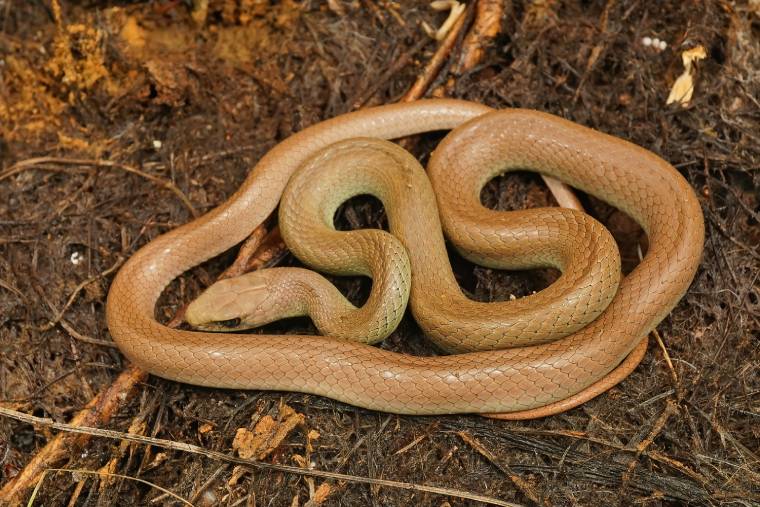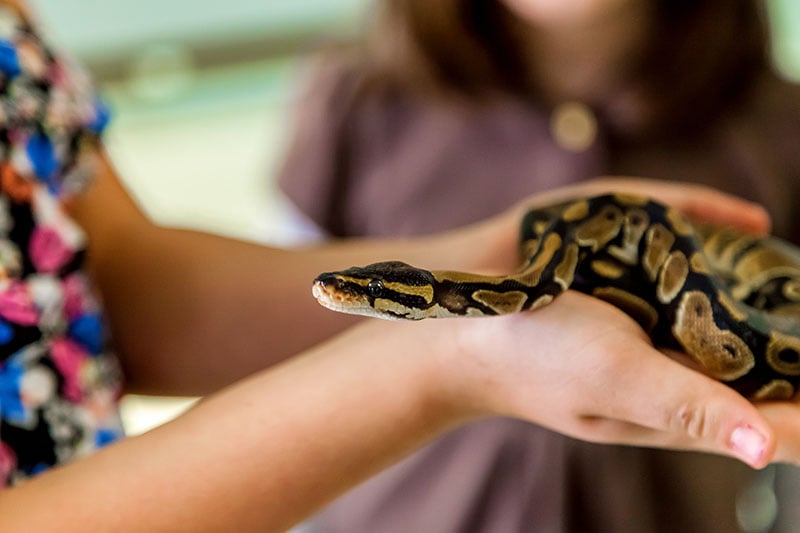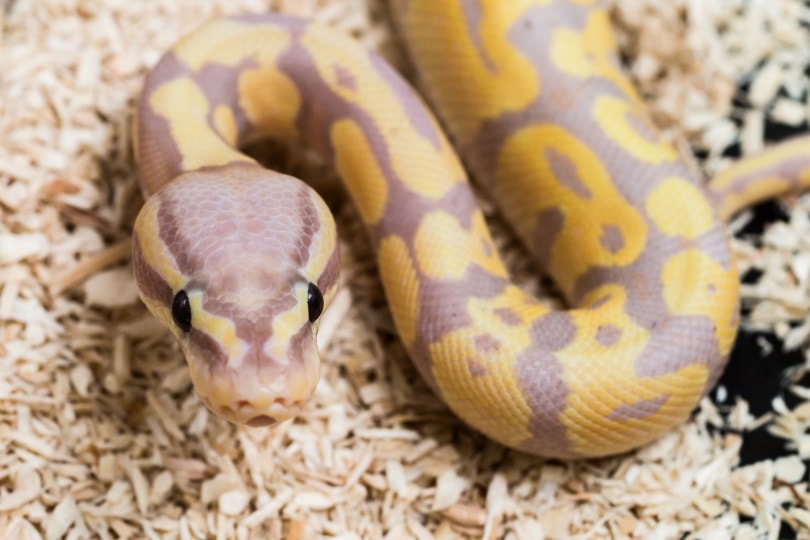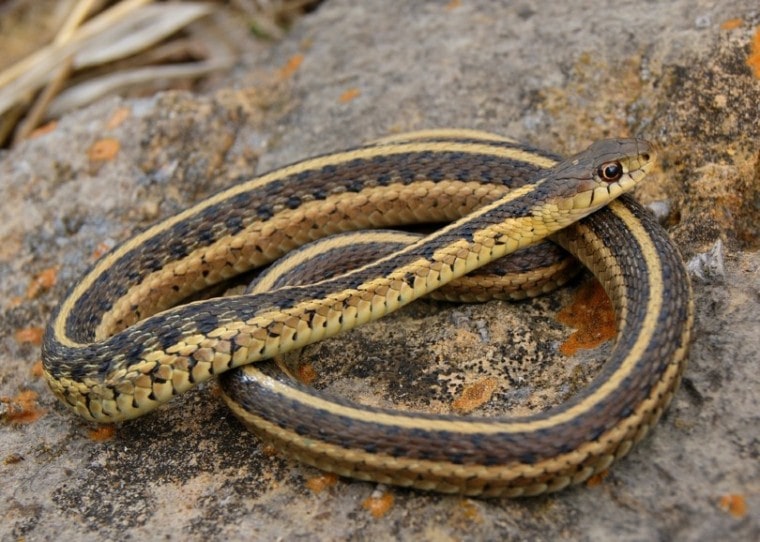
The garter snake is one of the most commonly found snakes in the United States. They are not poisonous nor large, they are generally docile animals, and they are frequently seen in backyards, local forests, and grasslands throughout the U.S.
So, do garter snakes make good pets? Yes, their docile nature and small size make garter snakes great to keep as pets, especially for beginners. They are ideal for homes that don’t have much space and for those who want to dip their toe into the world of keeping reptiles.
In this article, we look at the reasons that garter snakes make great pets, why they might not, and general tips for keeping them as pets. Let’s get started!
Garter Snake General Info
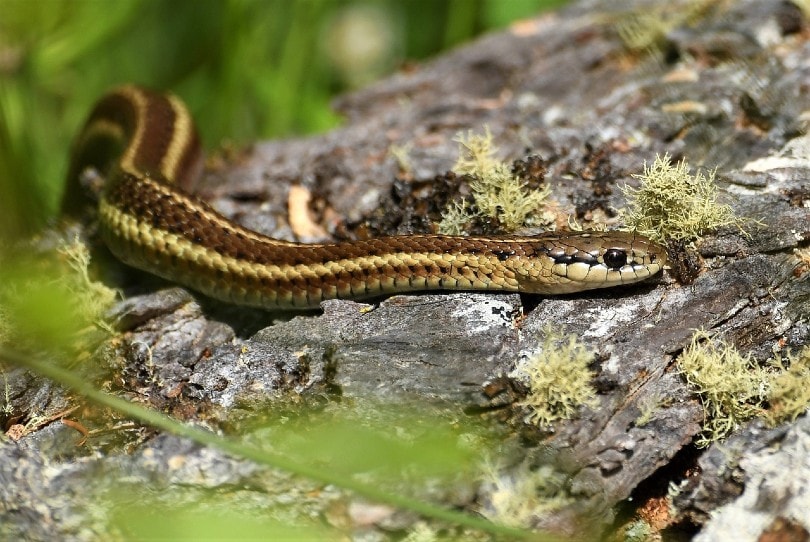
| Lifespan: | Up to 10 years in captivity |
| Average size: | 2.5–3 feet (females), 1.5–2 feet (males) |
| Care level: | Easy |
| Temperament: | Generally docile but can be defensive when wild caught |
Garter snakes come in a wide variety of colors depending on the species, but they almost universally have a distinctive trio of longitudinal stripes running down the length of their bodies. These stripes are mostly yellow but they can vary among species. These snakes are mostly non-venomous, though some do possess small amounts of venom, but they still pose no danger to humans.
In the wild, they inhabit a variety of habitats, including grasslands, wetlands, and forests, but they generally like to be close to water. They are fast reptiles that are generally terrestrial but can be found climbing small trees and shrubs, and most species are excellent swimmers. These small snakes have many predators, and when threatened, they give off a foul-smelling musk to ward them off. There are over 30 different species of garter snakes in the U.S., but the Thamnophis sirtalis, or common garter snake, is the most widespread.
Garter Snakes as Pets
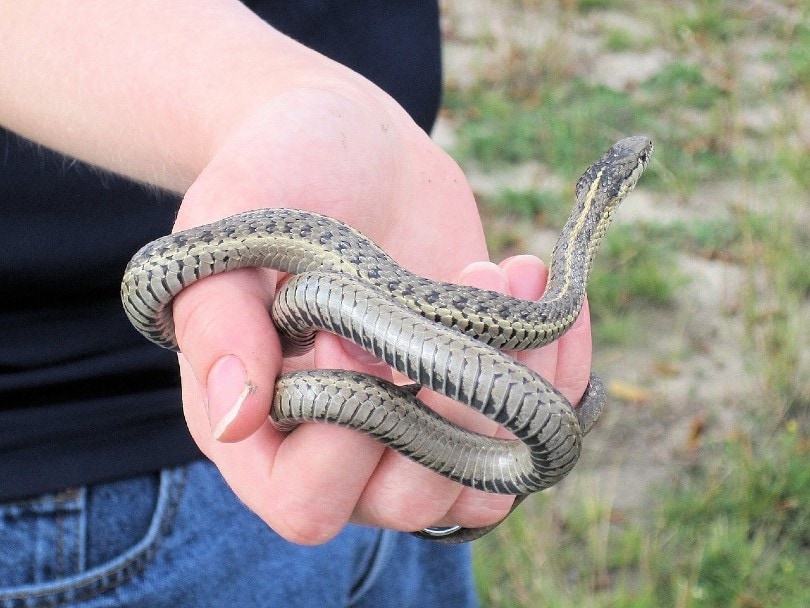
There are positive aspects to keeping garter snakes as pets, but like all reptiles, there are negative aspects too. Most enthusiasts find that the good outweighs the bad, though, especially for novice snake owners. Still, it’s important to know what you’re getting into. The positive and negative aspects of keeping these snakes as pets include:
Basic Care Requirements for Garter Snakes
Garter snakes are easy to care for in general, but as with any animal, you’ll need to research them thoroughly to properly provide for their needs. There are important factors to consider, but here are the basic requirements for these snakes.

Housing
Housing a garter snake is easy, and a large plastic storage container with the correct furnishings is ideal. At a minimum, you’ll need about 15 gallons of space per snake, depending on their size. Smaller individuals won’t need this much space, but larger species will likely need double this. That said, their enclosure should not be too big either, as it can make it difficult for them to find their food.
Temperature and Lighting
The ideal temperature for your Garter will depend on their species and where they come from. In general, room temperature, or around 70 degrees Fahrenheit, is ideal, with a warmer basking spot. They do not need any direct lighting and gentle, ambient light is perfect.
Substrate
There are a variety of substrates that can work well for garter snakes, including soil, coco fiber, and peat moss, but even newspaper can work. The accessories that you add are up to you, but your snake will appreciate hiding spots such as rocks or logs, live or fake foliage, and small branches to climb on.
Feeding
Garter snakes are great in that you don’t need to feed them mice or pinky mice, something that often puts off many would-be snake owners. Small, live fish, slugs, worms, and small frogs are all acceptable food for garters. The only difficult aspect of feeding them is that they need to feed more often than many other snake species, and this can be a challenge for owners.
Are Garter Snakes Good Pets?
Garter snakes make ideal pets, especially for beginners. They are generally docile, easy-to-care-for animals with easy housing and feeding requirements. If possible, it’s always better to purchase captive-bred specimens because they are easier to tame and handle. If you are a beginner and looking to dip your toe into the world of keeping reptiles, a garter snake is an excellent point of entry!
- Related Read: What Do Corn Snakes Eat?
Featured Image Credit by: Matt Jeppson, Shutterstock


